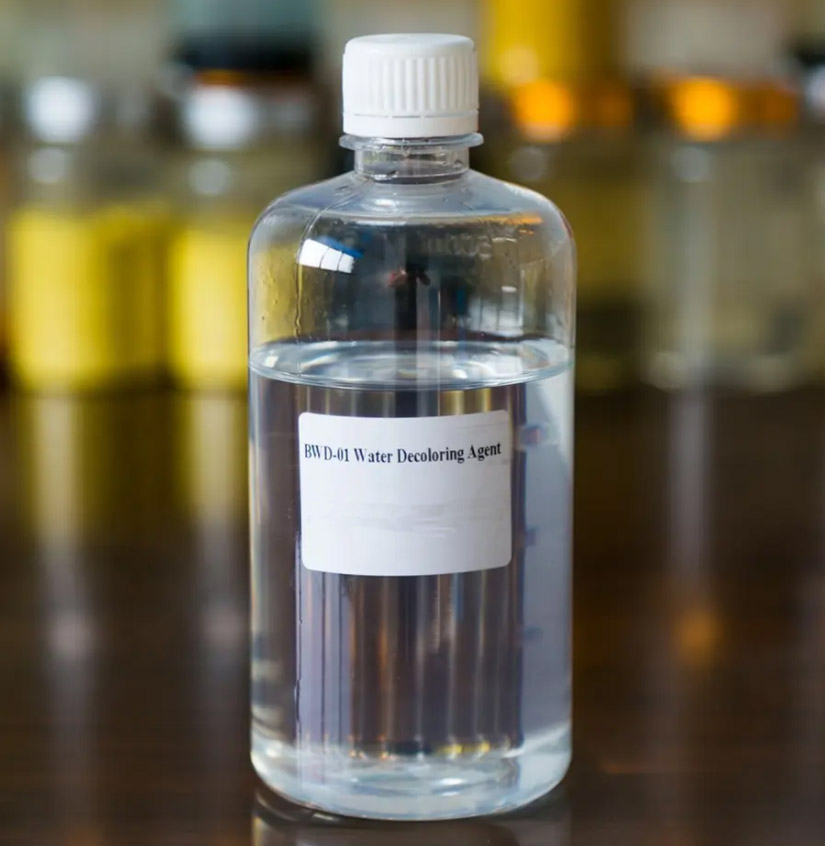Decoloring Agent
Decolorizing Agent Examples
Decoloring Agent Water Treatment
Effluent treatment chemical for color removal in water
Water-soluble resin used in adhesives, coatings, and textiles
PolyDADMAC is a cationic organic polymer commonly employed
What is Decolorizing Agent?
A decolorizing agent is a chemical substance used to remove or reduce color from a solution or material. Decolorizing agents are commonly used in various industries and applications where the presence of color is undesirable, such as in the purification of liquids, refining processes, and wastewater treatment.
Decolorizing agents work by either adsorbing or chemically reacting with the colored compounds present in the solution, resulting in the removal of the color. Some common decolorizing agents include activated carbon, activated clay, activated alumina, and various chemical additives.
In the water treatment industry, decolorizing agents are used to remove color from wastewater and industrial effluents, improving water quality and ensuring compliance with environmental regulations. In the food and beverage industry, decolorizing agents are utilized to remove unwanted pigments and impurities from edible oils, juices, and other food products.


Purpose of Decolorizing Agent
- Water and Wastewater Treatment
- Edible Oils and Fats Refining
- Food and Beverage Processing
- Pharmaceutical Manufacturing
- Chemical Industry
- Textile Industry
- Cosmetics and Personal Care Products
- Oil Spill Cleanup
- Photographic Processing
- Laboratory Applications
Working Principle of Decolorizing Agent
Adsorption: Many decolorizing agents, such as activated carbon and activated clay, work by adsorbing colored molecules onto their porous surfaces. The porous structure of the decolorizing agent provides a large surface area, allowing it to attract and trap colorants from the solution.
Chemical Reaction: Some decolorizing agents undergo chemical reactions with colorants in the solution, leading to the formation of colorless or less pigmented products. These chemical reactions may involve complexation, oxidation, reduction, or other transformations that alter the color of the compounds.
Ion Exchange: Certain decolorizing agents, such as certain types of resins, work through ion exchange processes. They exchange ions with colored molecules in the solution, effectively removing the colorants and replacing them with other ions.
Coagulation/Flocculation: In some cases, decolorizing agents can promote the coagulation or flocculation of colored particles, facilitating their removal from the solution through sedimentation or filtration.
Precipitation: Decolorizing agents may cause the precipitation of colorants as insoluble compounds, which can then be separated from the solution through filtration or other methods.
Degradation: Some decolorizing agents may degrade or break down colorants into smaller, colorless fragments, effectively eliminating their color from the solution.
HOOCHEM - Decoloring Agent Suppliers
As Decolorizing Agent suppliers, our primary goal to provide excellent and comprehensive services to meet the diverse needs of our customers. We offer a wide range of high-quality decolorizing agents, including activated carbon, activated clay, activated alumina, and other effective formulations suitable for various applications. Our services encompass prompt and efficient order processing, ensuring timely delivery to meet our customers' demands during critical times.
Our water treatment chemicals include flocculants, scale inhibitors and dispersants, corrosion inhibitors, Bactericidal Algicide, sewage decolorizing agents etc.
- The fastest can be shipped within seven days to the port of China
- If you are not satisfied with the product and service, you can return it
- Our company has passed SGS field certification inspection




